The AHS Blog

The Clockmakers’ Charter
This post was written by Jonathan Betts
The Queen’s Jubilee this year is being celebrated at Royal Museums Greenwich with a terrific new exhibition, 'Royal River', which takes a fascinating and richly illustrated look at the royal history of the Thames. The city livery companies naturally play a central role in the story, and the curator, David Starkey, wanted to display a good example of an original royal charter from one of the companies.
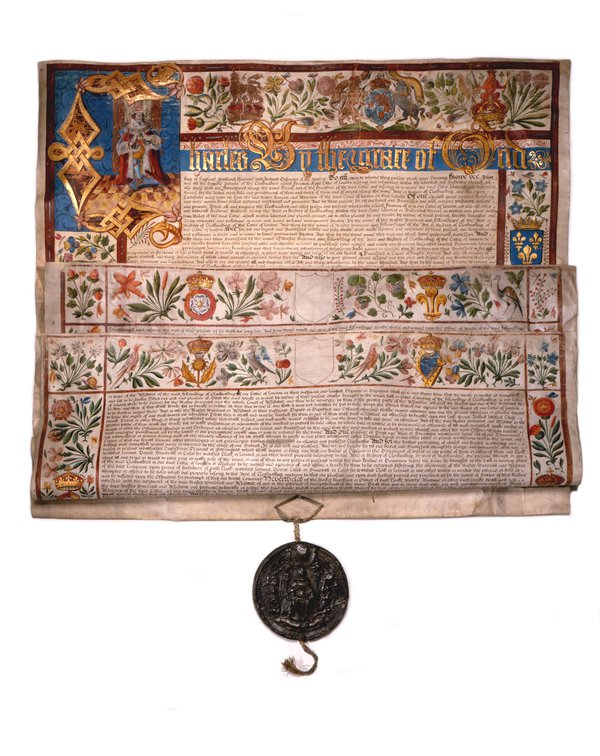
The finest surviving of all the original royal charters just happens to be that of the Worshipful Company of Clockmakers, the charter of incorporation granted by King Charles I in 1631. The document itself was completed in 1634, Mr John Chappell being paid £4 for its 'flourishing and finishing'.

For the first time I have had the chance to look at it closely and have been reflecting on its significance.
It is in extraordinarily well-preserved condition and is a most beautiful and evocative thing. The obvious beauty of the document lies in its illumination and the elegant script, so carefully delineated on the vellum. But there is a second, less obvious, beauty within the charter, and one which I, as an historian and member of the company, personally find inspiring and reassuring.
Unlike many of the livery companies, which today have little practical connection to their founding craft, and have had many changes to their charter reflecting this, the Clockmakers Company still regulates its activities with reference to its 380 year old charter, which is still a relevant and legal constitution.
So carefully and intelligently worded was the charter that those parts which have become obsolete (such as the right of the Company’s officers to destroy poor quality work of a member) were always optional and can simply be allowed to pass unnoticed, but those parts relating to the administration of the company and its membership were obligatory, yet are as relevant today as they were then.
Today the majority of members of the Company’s governing body, The Court, are real horologists, and we can proudly say this is one company which has not lost connection with its roots.
Our pristine charter connects us straight back to our horological forefathers and it’s wonderful to reflect that today’s members of the Clockmakers Company are the natural and direct successors of Edward East, Thomas Tompion, Joseph Knibb and all the great names from the Golden Age of English clockmaking.
Whatever makes you tick!
This post was written by James Nye
I’m fascinated by machines that are largely clockwork, but which don’t show the time. A visit by West Dean students to The Clockworks meant digging some intriguing items out of the stores.
Consider the early electricity meter. Early on Jules Cauderay used an electrically maintained balance wheel as a timebase, and then occasionally engaged the dial work (recording units) depending on the load.
It took Herman Aron to come up with an accurate meter, using two pendulums, one for timing, the other influenced by the load to be measured. Integrating between the performance of the two trains allows the dials to show consumption.
‘Aha!’ you say, ‘How does the customer know the timebase is accurate?’ Simple – Aron arranged for the trains to swap roles regularly. A great place to see one working is Amberley Museum.
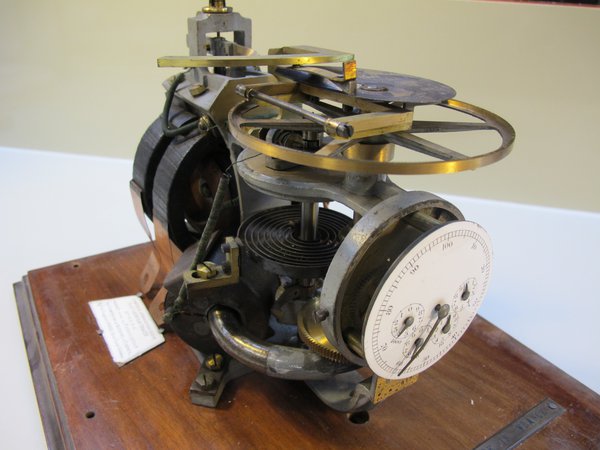

Henry Warren (synchronous motor man) used two trains to keep the power grid stable. When frequency stability was poor, he developed a device with a synchronous clock showing ‘grid time’ and a pendulum clock showing true time. By regulating turbine speed, accurate synchronous clocks for the home were possible.
Our UK ‘grid code’ specifies close tolerances over 24 hours, so your clock can be many seconds wrong, but on average, correct! At an AHS synchronous day, Michael Maltin fixed up a chart all round the room (like the Bayeux Tapestry!) showing a week’s (volatile) grid time versus GMT. You can see what the grid is doing right now here.

Another device that integrates two trains is the ‘chronometric’ speedometer, developed by Jaeger. This uses a balance wheel escapement, powered from a drive shaft as a timebase, allowing revolutions to be counted. A complex series of gears move the integrator and recording wheels back and forth, and the needle shows the last recorded speed. At least one manufacturer had to deal with customers who didn’t like the speedometer continuing to tick after they had come to a halt!
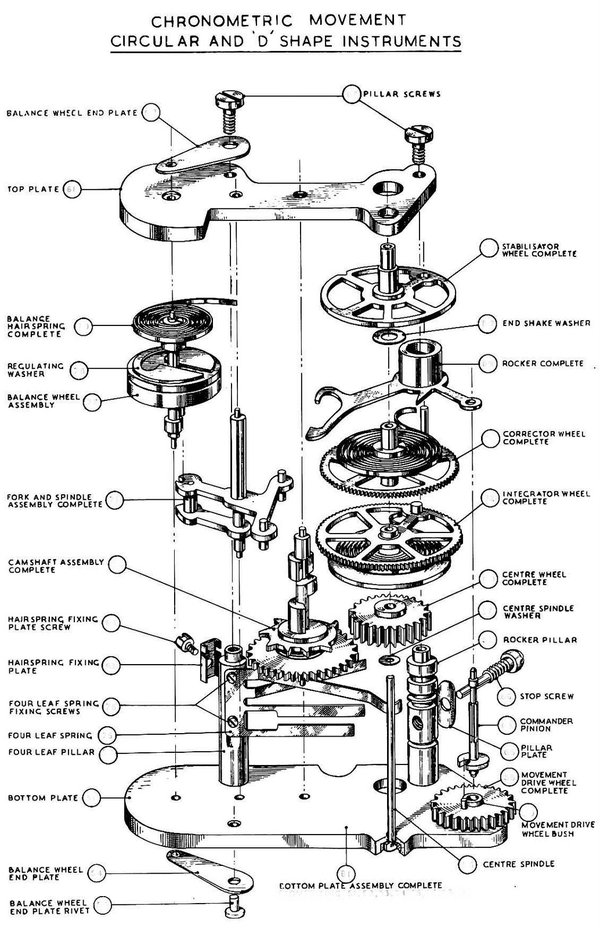
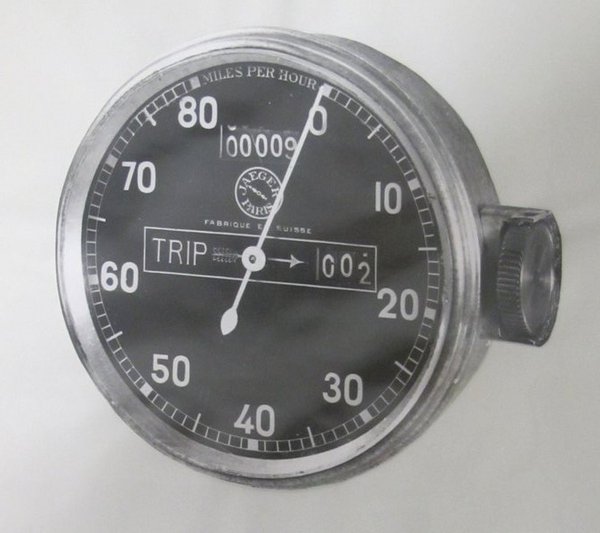
Lots of ticking – not much time!
Scientific instruments on a watchcase
This post was written by Peter de Clercq
Only a very small selection of the British Museum’s vast collection of watches is on display. Fortunately many more are described and illustrated in the museum’s online collection database, free for all to browse and explore. Visit www.britishmuseum.org > Research > Collection search, type in the word ‘watch’ and you get 6634 results!
Of course there are ways to limit your search. One watch that caught my attention was this gold cased, month-going cylinder watch by Ferdinand Berthoud (1727-1807), one of the most celebrated watchmakers in eighteenth century France. My special interest was the image on the back of the watchcase (Fig 1).
To quote the museum’s description: 'The design on the back – incorporating a universal equinoctial ring dial signed "OV BION A PA", an armillary sphere, a pair of dividers, a telescope, a microscope and a book – indicates that the watch was intended for a customer with scientific interests'. In fact, we discern one more instrument: an air-pump as used in physics experiments, as famously captured by Joseph Wright of Derby (Fig. 2).

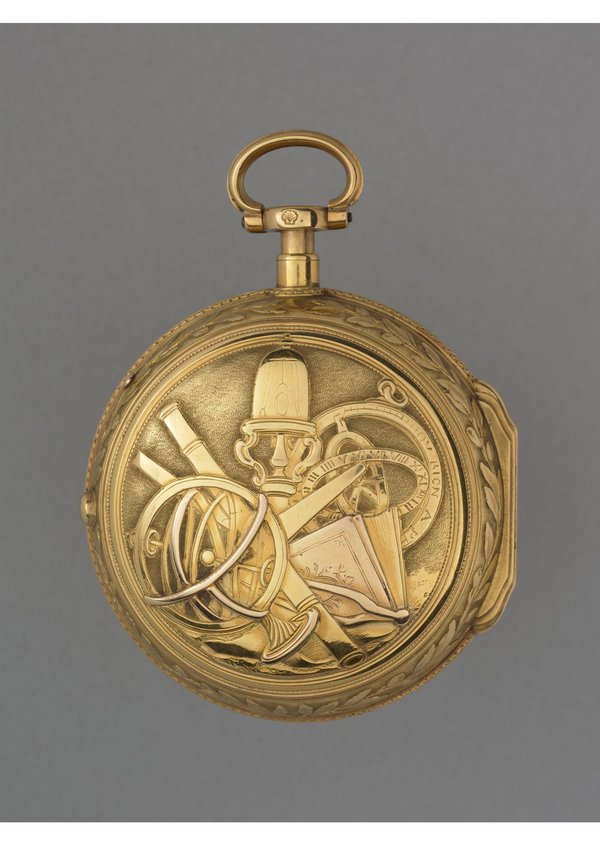
As my professional background is in the history of scientific instruments, I find this watchcase of great interest. It reminds me of similar ‘group portraits’ of instruments that can occasionally be found on gravestones or funerary monuments in old cemeteries.
One example is this cast-iron funerary monument erected for a Dutch amateur of the sciences (Fig. 3). For details see this short article in Dutch; an English version appeared in the Bulletin of the Scientific Instrument Society Vol 69, June 2001, but is not available online.
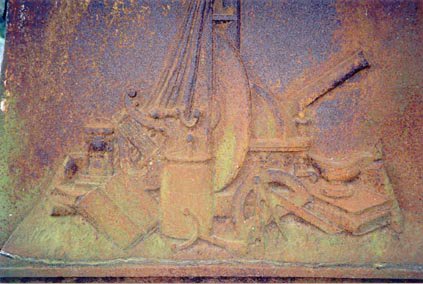
If anyone knows other examples of scientific instruments depicted on a clock or a watch, please leave a comment, as I would love to know.
Second Rock from the Sun – Venus in a Sky of Diamonds
This post was written by Andrew King
The most eagerly awaited event of the astronomical calendar this year will pass us here on Earth on the 6th June. There are two Transits of Venus eight years apart but as this happens at intervals of more than 100 years we will have to wait until 2117 before we see it again.
The brilliant beacon of Venus signals the promise of the day to come and as the Evening Star, trails the Sun into the fall of night.
Venus the God of love and beauty and the name of the planet shrouded in what for centuries was believed to be watery clouds from which the light reflected from the Sun creates the famous glowing beacon apparently covering a romanticised tropical paradise. The truth is rather different.
Venus our closest planet at just 41,000,000 kilometres is a hell with toxic pressure nearly 100 times that on Earth combined with a surface temperature of 475 degrees centigrade. As for that luminous glowing envelope of cloud, it has proved to be an evil cocktail of carbon dioxide with a splash of sulphuric acid creating a ferocious green house effect.
For the astronomers Venus has always been of the greatest importance. As early as 1716 Edmond Halley [1656-1742], later to become Astronomer Royal, accurately predicted not only the next appearance of the Comet named after him but also the Transits of Venus of 1761 and 1769.
When all these events occurred it became a defining moment in the world of science as Halley’s calculations were based on the mathematics published by Isaac Newton in 'The Principia' of 1687. Graphic proof indeed of the Newtonian Revolution.
Halley believed, correctly, that the parameters gained from the Transits would enable the determination of the distance between the Earth and the Sun which in turn could lead to the estimation of the size of the Solar system – the Holy Grail of Astronomy.
This year the very best position to witness the Transit of Venus will be in Hawai’i where the Sun will be directly overhead. Here in Great Britain the sighting will not be as extensive as it was in 2004 but it is still an exciting prospect not to be missed.
Although the event starts at 11:10am BST on the 5th June , in G.B. it will not be visible until sunrise the following morning near the end of the Transit which lasts nearly 6 hours. At this time of year sunrise is early. In Edinburgh it will be at 3:30am BST, in London a little later at 3:45am and at Penzance later still at 4:15am.
Venus will appear as a black disc slowly traversing the burning hot face of the Sun always assuming that it is not obscured by cloud. Venus in Transit belies the regular morning and evening dazzling globe – Venus the Queen of Diamonds.
WARNING – Never look towards the Sun without the correct eye protection. It is essential to seek professional advice.